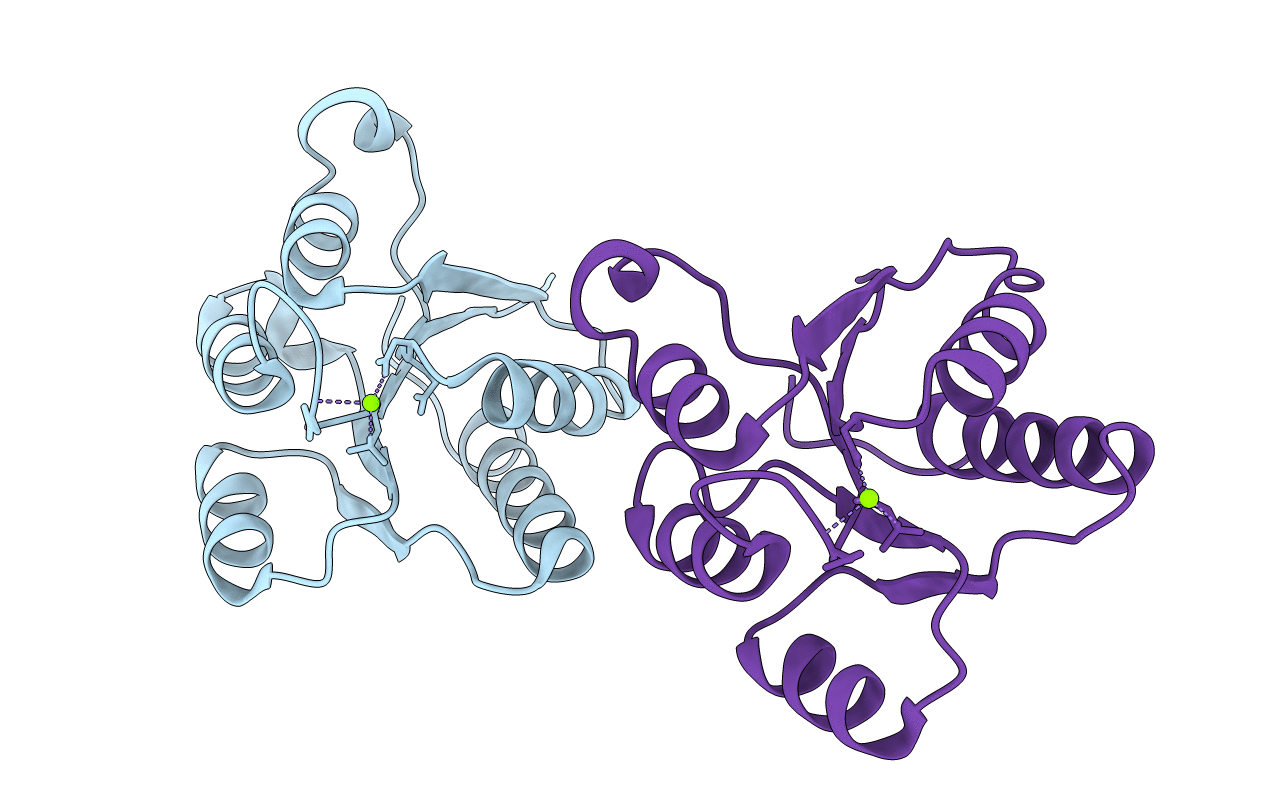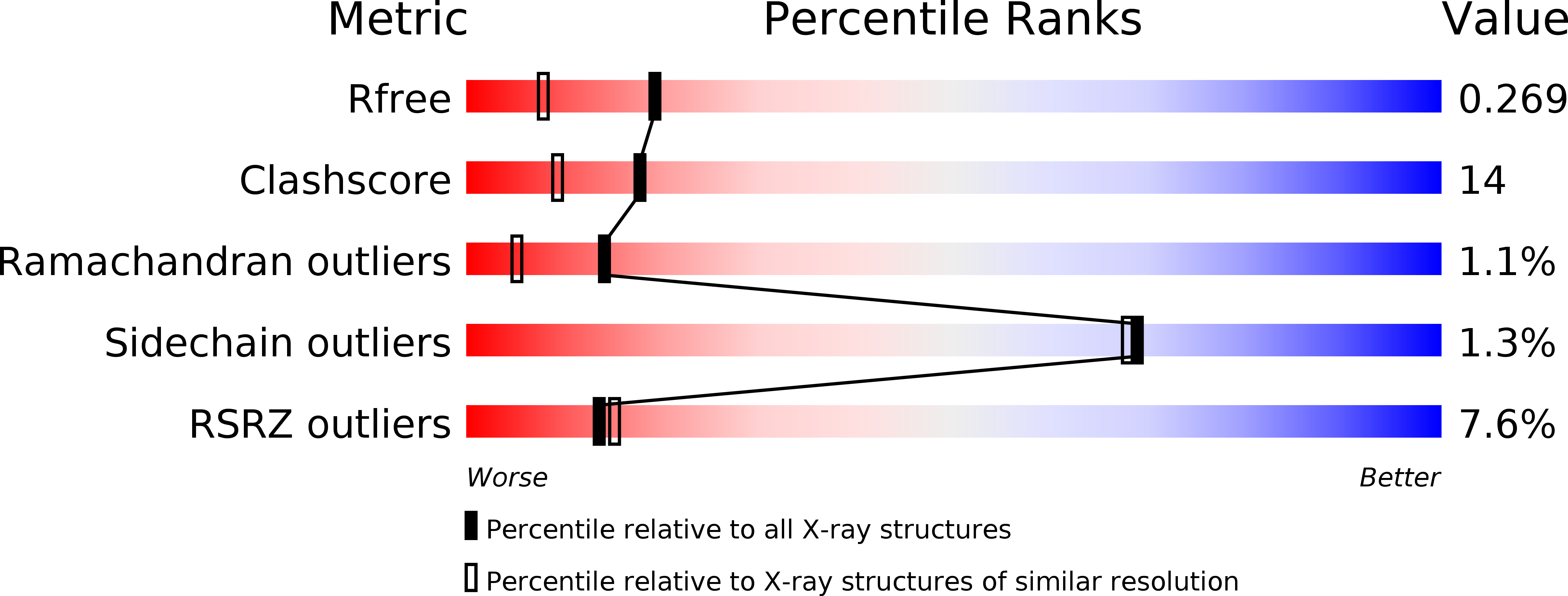
Deposition Date
2001-10-15
Release Date
2003-12-16
Last Version Date
2025-03-26
Entry Detail
PDB ID:
1K68
Keywords:
Title:
Crystal Structure of the Phosphorylated Cyanobacterial Phytochrome Response Regulator RcpA
Biological Source:
Source Organism:
Tolypothrix sp. PCC 7601 (Taxon ID: 1188)
Host Organism:
Method Details:
Experimental Method:
Resolution:
1.90 Å
R-Value Free:
0.27
R-Value Work:
0.23
R-Value Observed:
0.23
Space Group:
P 21 21 2


